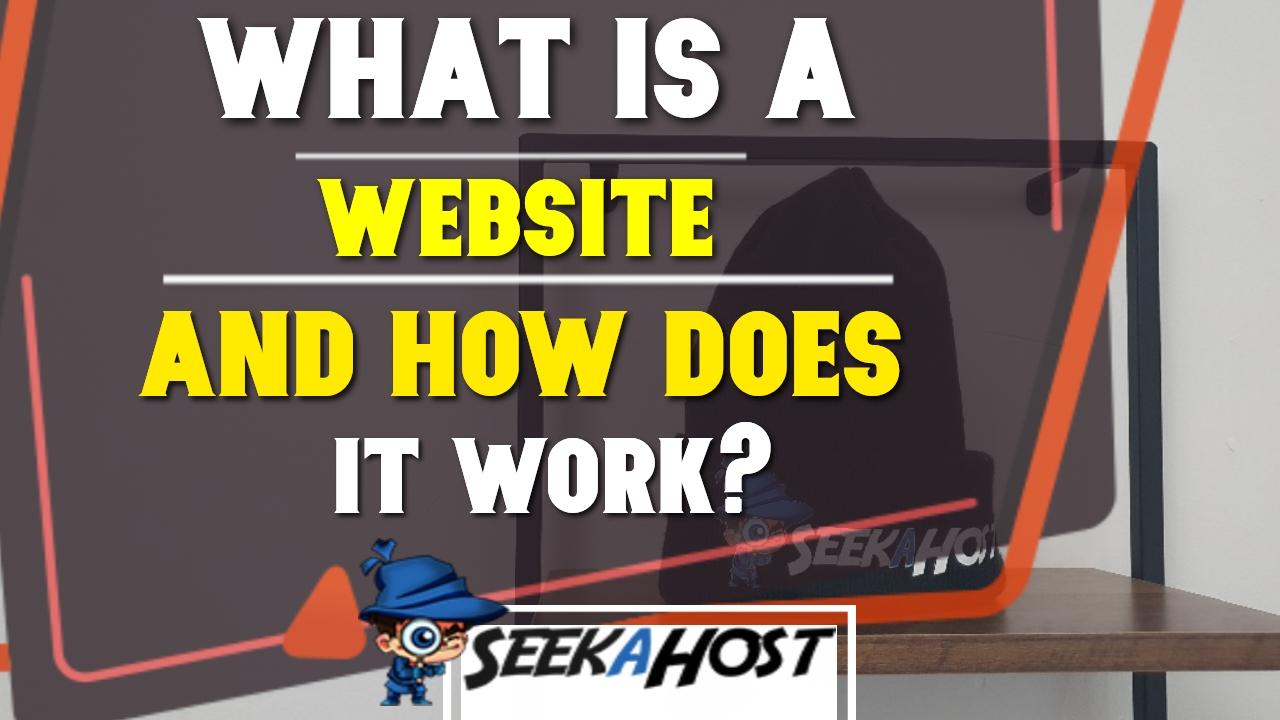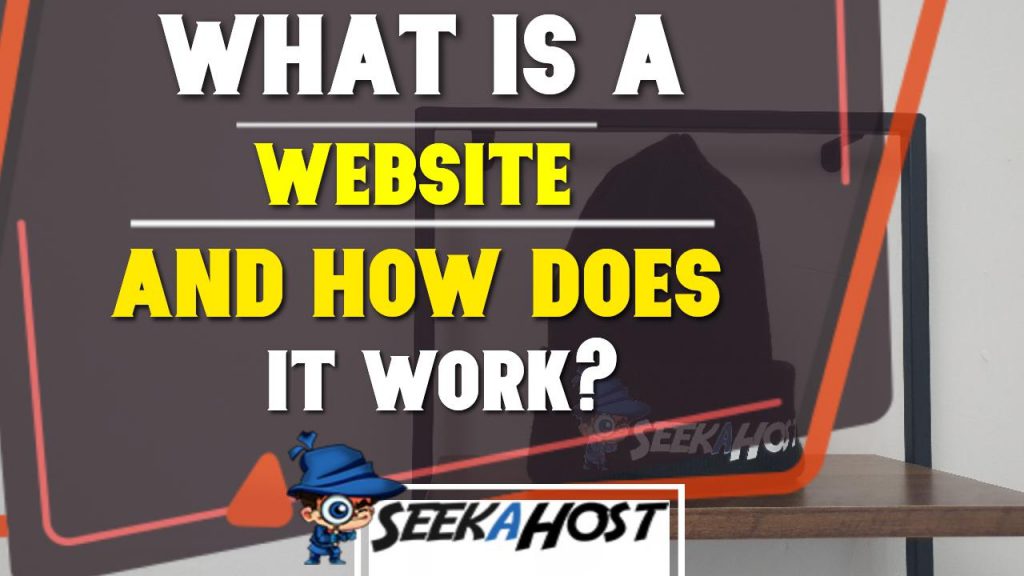
What is a Website and how does it work?
By Fernando | January 3, 2022
Table of Contents

Understanding what a website is and how does it work is vital for your online journey. I’ve created many sites over the years and the seekahost.app is the solution to help anyone get online with a small business website and a WordPress blog.
So if you are looking to learn how the web and sites work, this guide will explain to you everything and show you to start your own site in the easiest possible manner.
Let’s dive deep into the subject and help you learn everything about websites and create one, so you can see how simple it is to build your own site using WordPress.
A website is a collection of web pages. Often those who are not technically inclined confused between a website and the internet.
The internet is a system employing which multiple computing units are connected.
A website is a form of content that resides on and uses the internet (others include email clients, e.g. Outlook and Thunderbird, torrents, streaming services such as YouTube and Spotify).
The most accessed websites include Google, Wikipedia, Facebook, Bing, Huff Post.
Another important distinction is between the internet and the world wide web. The WWW sits on top of the internet and is a collection of publicly accessible websites.
Let us delve a little deeper.
A brief history of websites
The first website, http://info.cern.ch was launched on 6th August 1991 by Tim Berners Lee, a British physicist during his work on computer networking at CERN (Conseil Européen pour la Recherche Nucléaire) in Switzerland.
At that time, the aim of public networking was not forwarding inane memes but quick information exchange between scientists around the world.
Sending a 400-page thesis by snail mail from Sorbonne University in Paris to Johns Hopkins University in Baltimore would have taken at least a week in 1990. Even a rudimentary website would take no more than 5 minutes (time taken to load a 500-kilobyte text-only webpage on a slow and patchy 56 kilobit per second connection).
CERN made the technology public and by the end of 1992, there were about ten websites, most of which were for academic pursuit in the field of physics.
The first mega website was Yahoo, founded in early 1994, followed soon by well-known names, e.g. MSN and BBC. By the mid-90s, the web was well established. Currently, there are 1.8 billion websites.
How does a website work?
A website consists of a single web page or, more usually, several web pages.
A web page is written in HTML, HyperText Markup Language, also invented by Tim Berners Lee.
It is not a programming language such as C++ and Python.
Basically, a markup language is used for the representation of data and a programming language for the manipulation of data.
In addition, a website also has to use CSS or Cascading Style Sheets, which convert bland text-only web pages to more aesthetic forms.
All websites have a unique domain name such as https://www.seekahost.com or https://www.seekahost.app **The https:// is the SSL certificate part which ads a secure layer for the root domain (seekahost.com) and the www. is the subdomain addition world wide web. The domain name is the web address to find it on the web and it consists of numbers that are called an IP address.
Inside a domain name are various web pages e.g.
https://www.seekahost.com/index.php/store/ssl-certificates
https://portal.seekahost.app/
and maybe hundreds or even thousands more.
When you type an URL, say http://johndoedentist.com/about, into the browser, the browser looks up the DNS.
DNS is Domain Name Server. Think of it as a phone book that every device on the web consults. It directs the browser to the IP address of http://johndoedentist.com/
An IP address is a unique numerical identifier of a network device in the form of xxx.xxx.xxx.xxx such as 187.190.25.96 (for sake of simplicity, the example is from IPv4 and not IPv6). Think of it as the phone number of the website.
Armed with this info, the browser (technically known as the client) sends a request to the server located at 187.190.25.96 that contains the required files of http://johndoedentist.com/about
This request uses rules known as HTTP or Hypertext Transfer Protocol. Think of it as traffic rules for the internet. Any data exchange over the internet has to use HTTP.
If the server that contains the http://johndoedentist.com/about webpage agrees (it might not if the traffic is too high or the website is being maintained) to the client request it fetches files and sends them to the client device.
These files are of two types—rendering files that contain HTML, CSS, and similar. Content files such as images, PDF, short video clips.
The browser (we are so used to Chrome and Firefox that we tend to forget that these are absolute marvels of computer engineering) parses the HTML first.
If the HTML links to CSS and JavaScript stored on the server, it sends another request for those.
Using a set of complex APIs known as DOM, Document Object Model, and CSSOM, CSS Object Model, the browser creates the website frontend, which is visible to you and me.
What is a web server?
We are all acquainted with the client device (the smartphone, laptop, or desktop we use daily).
In simple terms, a web server contains the information that a client device draws from.
It is easy to understand that a server must have an enormous storage capacity.
Whereas a modern laptop has a capacity of 1 TB (one terabyte = one million bytes) a Dell EMC PowerEdge R750 server has 16 x 2.4 TB capacity (expandable to 24 x 2.4 TB).
A server has the same components as a smart device and laptop—RAM, storage, CPU, but works very differently. Its purpose is not displaying web pages or gaming but handling thousands of requests, fetching information from the correct sector of a hard disk, and sending it on its way. A server CPU, in particular, differs greatly in its architecture from a client CPU.
Static versus Dynamic websites
In a static website, the same content is displayed every time the website is loaded. To create a static website HTML, CSS, JavaScript is used. There is no requirement for Content Management. It is quite easy to construct especially with the modern web editors used by WordPress, Squarespace, Wix, etc.
In a dynamic website, the content of the page might change. There is a database from which the website draws updated information. This requires the use of server-side languages such as PHP and Node.js. It costs more to develop and is slower.
Usually, the URL of a static site would appear as www.this-is-a-site/this-is-a-page.html
Who needs a website?
In short, everyone.
Most of us have a Facebook page that more or less acts as a personal blog. You could, if you wish, provide information about your life events, where you work, who you are (your political ideology, etc), and share images and short videos.
Many have a LinkedIn page that is more functional and professional and caters to advancing career and networking.
However, if you are a dentist or own a small boutique, a website makes more sense than a Facebook page. You can furnish more information, make sales, and accept payments in a neat and easy way.
In that case, a personal website becomes essential. You can buy cheap WordPress hosting from SeekaHost for as little as $1.49 monthly. Have a developer set up your WordPress site based on your design. Buy a basic WordPress theme package (such as Arlo which sells for $17) you would get plenty of layouts to choose from. Or else you can learn how to create your own personal website and get online in a matter of minutes.
But it’s not people alone who need a site. Businesses need it more than people and a Small business website costs a very affordable price, if you are keen to get your site designed and devlpeoed by professionals.
Online stores have done roaring business in 2020 when everyone was stuck indoors because of the pandemic.
In the B2B segment, at least 93% have gone online to preserve themselves.
A study conducted by Ernst and Young in early 2021 showed that sixty percent of consumers in the USA have shifted to online from brick and mortar compared to the year before. There is absolutely no doubt that the bulk of urban consumers from Melbourne to Manchester have done the same.
Even if your business is not in the eCommerce sphere you need advertisement and an avenue to broadcast your presence.
Nothing does that job better than a website.
You can set up a simple website for $100 (including developer cost) and incur a cost of no more than $10 monthly to run it. In return, your business can be accessed 24x7x365 from any corner of the globe.
If you learn HTML and CSS, you could do it for almost nothing save a few dollars for hosting.
With web hosting prices at an all-time low and fantastic website editors that let you create a bespoke WordPress site in a day, there is no reason to delay.


